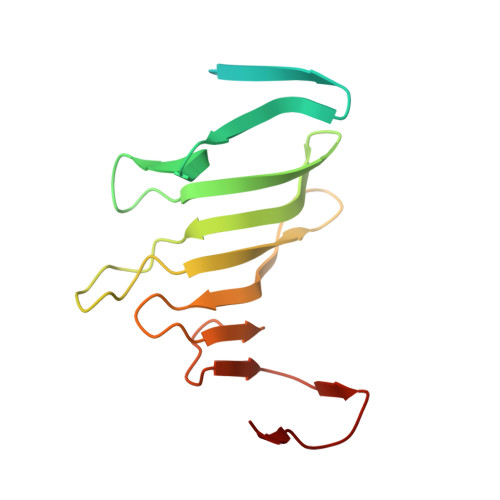Bdellovibrio bacteriovorus uses chimeric fibre proteins to recognize and invade a broad range of bacterial hosts.
Caulton, S.G., Lambert, C., Tyson, J., Radford, P., Al-Bayati, A., Greenwood, S., Banks, E.J., Clark, C., Till, R., Pires, E., Sockett, R.E., Lovering, A.L.(2024) Nat Microbiol 9: 214-227
- PubMed: 38177296
- DOI: https://doi.org/10.1038/s41564-023-01552-2
- Primary Citation of Related Structures:
8OJN, 8OK3, 8OKS, 8OKW, 8OL4, 8OML, 8ON4, 8ONB, 8ONC, 8OND, 8ONF - PubMed Abstract:
Predatory bacteria, like the model endoperiplasmic bacterium Bdellovibrio bacteriovorus, show several adaptations relevant to their requirements for locating, entering and killing other bacteria. The mechanisms underlying prey recognition and handling remain obscure. Here we use complementary genetic, microscopic and structural methods to address this deficit. During invasion, the B. bacteriovorus protein CpoB concentrates into a vesicular compartment that is deposited into the prey periplasm. Proteomic and structural analyses of vesicle contents reveal several fibre-like proteins, which we name the mosaic adhesive trimer (MAT) superfamily, and show localization on the predator surface before prey encounter. These dynamic proteins indicate a variety of binding capabilities, and we confirm that one MAT member shows specificity for surface glycans from a particular prey. Our study shows that the B. bacteriovorus MAT protein repertoire enables a broad means for the recognition and handling of diverse prey epitopes encountered during bacterial predation and invasion.
Organizational Affiliation:
School of Biosciences, University of Birmingham, Birmingham, UK.














